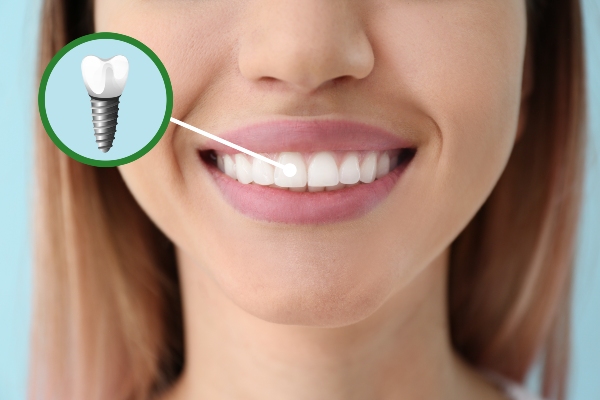Signs You May Need a Dental Filling

A dental filling is important in achieving good dental health and a painless smile. This dental restoration can seal the tooth and protect it from further decay. Knowing when to get fillings can help you achieve your smile goals earlier. Here are the signs your tooth may need a dental filling right away.
Sharp dental pain
Pain often develops when cavities form and may be sharp and constant. Eating or drinking something hot or cold can also trigger the discomfort. The enamel is likely worn already, exposing the nerves. See the dentist if this type of dental pain continues. The right type of dental filling will seal the cavity and may stop the pain.
Foul breath
Bad breath can develop as cavities do. More food particles enter the cavity as it goes deeper. This is the ideal environment for bacteria to live and thrive. When this happens, foul breath develops. The patient may also have a bad taste in the mouth. A loose dental filling may cause a metallic taste.
Missing or damaged filling
Old fillings can crack, loosen, or fall out. A reason for this may be more dental decay. Poor dental care can also cause a dental filling to dislodge. Replacing the filling is necessary at this point. This will prevent dental issues from worsening.
A hole in the tooth
This is a visual sign that the tooth needs a filling. The patient may also notice that there is a rough spot or an indentation forming on a tooth. This may start as a dark spot. It may develop into a cavity later. The dentist will address this issue with a dental filling.
Dental damage
A crack or fracture on a tooth provides an opening for bacteria and food particles to enter the tooth. This is a common result of a facial or oral injury. A dental filling can repair the dental damage. This will even prevent dental decay.
The dental filling procedure
The dentist will numb the area first with a gel or cream. This will prevent the patient from feeling any pain during the treatment. The patient will feel some pressure but not discomfort. Preparing the tooth for the dental filling will come next. Dental dams will isolate the tooth and keep it dry. A bite block will prevent the patient from exerting effort to keep the mouth open.
The dentist will grind away the decayed area of the tooth. This will also get rid of any stuck bacteria there. A suction device will remove debris and water from the mouth as the dentist works. Rinsing and drying the area will allow the dentist to see the treatment area well.
Choosing the right color of dental filling material will follow. Research shows that most patients choose tooth-colored fillings. This type of restoration blends well with the neighboring natural teeth. Applying the filling and hardening it with a curing light will come next. The dentist will refine the dental filling so that it looks natural.
Adjusting the filling will be necessary. The patient will bite down on a piece of carbon paper. This will determine if the new bite is even. Trimming a high dental filling down will make it more comfortable. Adjustments like this are important in achieving a natural bite. It also ensures the longevity of the restoration.
Preventing tooth decay
Cavities and gum disease are common dental issues. They can worsen right away if the dentist does not treat them early. Learning how to prevent these dental problems can help maintain a healthy smile. Below are some ways to prevent dental decay:
- Snack less. This reduces the amount of bacterial acids that can attack the enamel. If snacking is necessary, see to it that the snacks are good for oral health.
- Brush at least twice a day for two minutes each time with a soft-bristled toothbrush and fluoride toothpaste. Floss once a day and use a fluoride mouthwash. Studies show that fluoride can help remineralize the enamel and protect it from bacterial acids.
- Do not overdo brushing. This contributes to enamel erosion.
- Hydrate all the time. Drinking water regularly buffers the acids that attack the enamel.
- Eat and drink more dairy products. The minerals and vitamins in dairy products help strengthen teeth and trigger saliva production.
- See the dentist regularly. Dental checkups can clean the teeth with professional-grade tools. The dentist can also remove plaque and tartar that cause dental decay.
Knowing that you need a dental filling can help you maintain a painless smile
Cavities can start as dark spots. Over time, these spots can develop into holes. Cavities can cause pain and other dental issues. Seeing the dentist can treat the problem with a dental filling. Working with your dentist can make your restoration last for a long time.
Request an appointment here: https://cosmeticdentistdallastx.com or call Lalangas Family Dentistry at (972) 534-6008 for an appointment in our Dallas office.
Check out what others are saying about our dental services on Yelp: Composite Fillings in Dallas, TX.
Related Posts
If you are self-conscious about your smile because of a damaged or chipped tooth, you should know that a dentist can use dental fillings to quickly correct these minor flaws and restore your smile's appearance.Dental filling application is an in-office technique in which dentists use a tooth-colored resin substance to fix minor flaws in the…
Even with healthy oral habits, you can find yourself in need of dental restoration. Tooth colored fillings allow dentists to provide their patients with more aesthetically pleasing results. Here are some details on using this option to repair dental cavities.Many modern patients want teeth to look natural when laughing or smiling. This is why tooth…
If you have a cavity, the good news is that composite fillings are one of the restoration options available to restore the tooth. Compared to traditional fillings, the newer composite variety offers some significant benefits.Composite restorations are made of a synthetic resin, a plastic material, that is mixed together with tiny particles of quartz or…
Composite fillings are made of plastic resin and glass particles mixed together. Your dentist may offer you composite dental fillings if they think you would benefit from them. You can ask your dentist for a composite filling, and if they do not think it would be of benefit to you, they will let you know…


